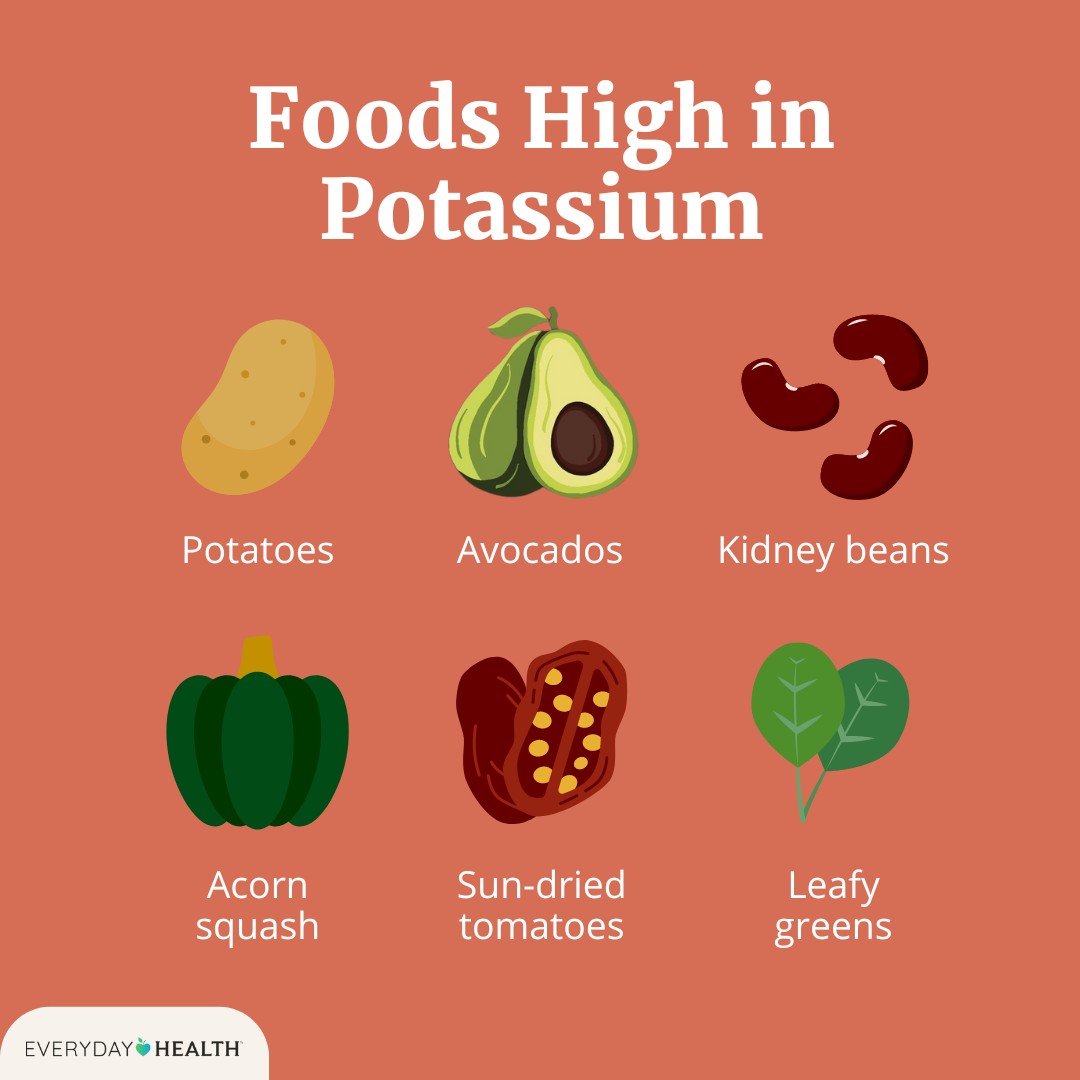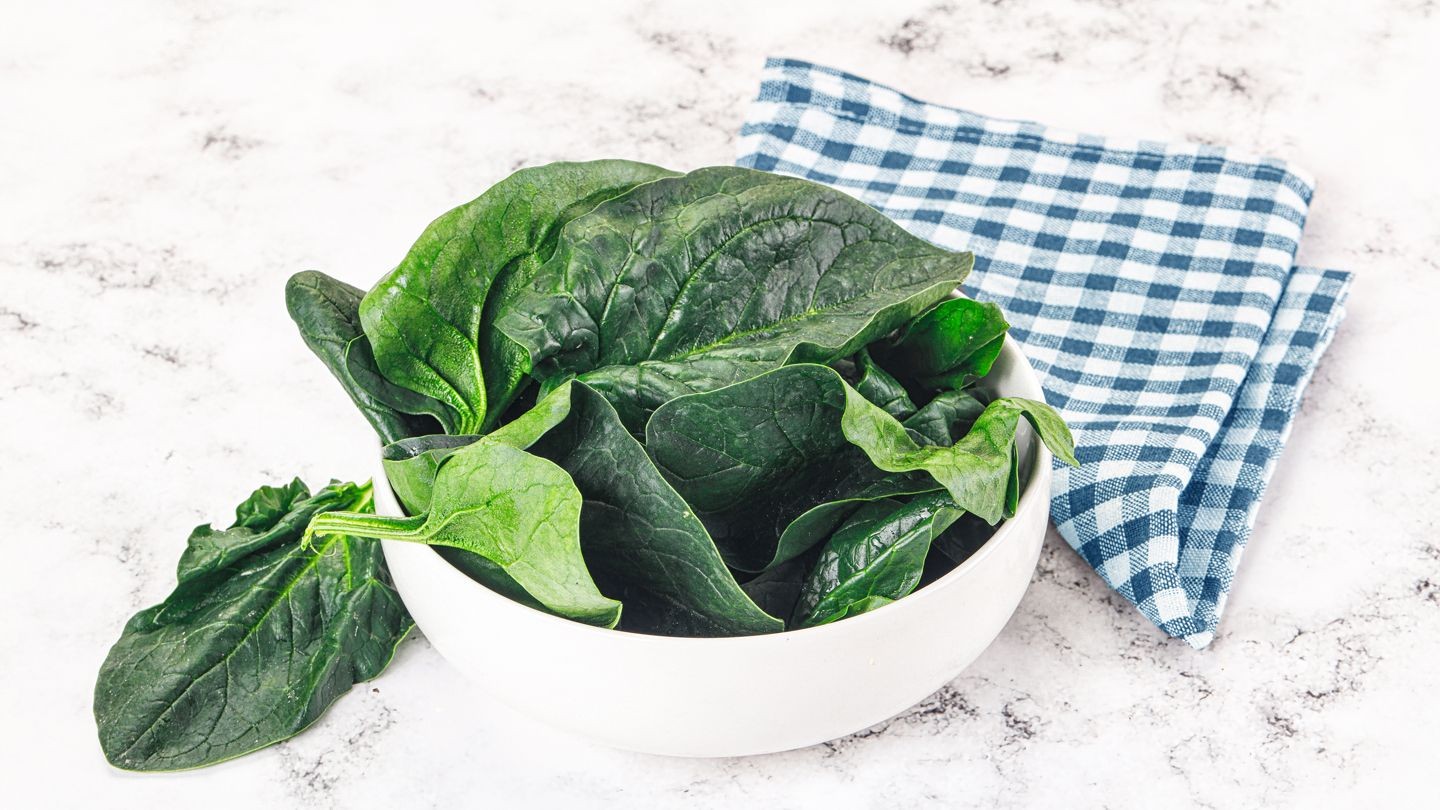Tomatoes, celebrated for their vibrant flavor and versatility, are also a notable source of potassium. Understanding the potassium content in tomatoes is crucial for maintaining overall health, especially for individuals monitoring their electrolyte intake. At HOW.EDU.VN, our team of experts can provide tailored guidance on incorporating potassium-rich foods like tomatoes into your diet to meet your specific health needs. Whether you’re looking to manage blood pressure, support muscle function, or simply optimize your nutrition, knowing the potassium levels in your favorite foods can empower you to make informed dietary choices. Let’s explore the nutritional advantages, health benefits, and potassium-related aspects of tomatoes, while touching on kidney health and electrolyte balance.
1. What Is the Potassium Content of Different Types of Tomatoes?
The potassium content in tomatoes can vary based on the type and preparation method. Generally, one medium-sized raw tomato contains approximately 292 mg of potassium.
To provide a clearer picture, here’s a breakdown:
| Type of Tomato | Potassium Content (Approximate) |
|---|---|
| Raw, Medium | 292 mg |
| Sun-Dried (½ cup) | 925 mg |
| Tomato Paste (1 tbsp) | 162 mg |
| Tomato Sauce (1 cup) | 728 mg |
| Cherry Tomatoes (1 cup) | 350-550 mg |



Sun-dried tomatoes, in particular, offer a concentrated source of potassium due to the removal of water, making them a potent addition to your diet if you’re aiming to boost your potassium intake.
2. What Are the Health Benefits of Potassium from Tomatoes?
Potassium is an essential mineral that plays multiple critical roles in maintaining human health. Tomatoes, as a significant source of potassium, offer a range of health benefits.
2.1. Regulating Blood Pressure
Potassium helps balance sodium levels in the body, which is crucial for maintaining healthy blood pressure. Studies have shown that increasing potassium intake can lead to a reduction in blood pressure, particularly in individuals with hypertension. According to the Centers for Disease Control and Prevention (CDC), maintaining this balance is vital for reducing the risk of heart disease and stroke.
2.2. Supporting Muscle Function
Potassium is essential for muscle contractions and nerve function. It helps maintain the excitability of nerve fibers, ensuring proper transmission of signals between nerves and muscles. This is particularly important for athletes and individuals who engage in regular physical activity. Insufficient potassium levels can lead to muscle cramps, weakness, and fatigue.
2.3. Maintaining Fluid Balance
Potassium, along with sodium, is a key electrolyte involved in regulating fluid balance within the body. It helps maintain the proper distribution of fluids inside and outside of cells, which is essential for cell function and overall hydration. This balance is crucial for preventing dehydration and ensuring optimal physiological function.
2.4. Enhancing Bone Health
Some research suggests that potassium may play a role in maintaining bone density and reducing the risk of osteoporosis. Potassium-rich foods, such as tomatoes, can help neutralize acids in the body, which can otherwise leach calcium from bones. While more research is needed, incorporating potassium into your diet can be a proactive step toward supporting bone health.
2.5. Supporting Kidney Health
While high potassium levels can be a concern for individuals with kidney disease, adequate potassium intake is generally beneficial for kidney health in people with normal kidney function. Potassium helps the kidneys filter waste and maintain electrolyte balance. However, it’s crucial for individuals with kidney issues to consult with a healthcare provider to determine the appropriate potassium intake.
3. How Do Tomatoes Compare to Other Potassium-Rich Foods?
Tomatoes are a good source of potassium, but several other foods contain even higher concentrations of this essential mineral. Comparing tomatoes to other potassium-rich foods can help you make informed choices about diversifying your diet to meet your nutritional needs.
| Food | Potassium Content (Approximate) | Serving Size |
|---|---|---|
| Acorn Squash, Cooked | 896 mg | 1 cup |
| Sun-Dried Tomatoes | 925 mg | ½ cup |
| Potatoes, Medium Russet | 900 mg | 1 potato |
| Spinach, Cooked | 839 mg | 1 cup |
| Avocados | 690 mg | 1 avocado |
| Bok Choy, Shredded | 631 mg | 1 cup |
| Cantaloupe | 427 mg | 1 cup |
| Bananas | 422 mg | 1 medium |
| Nonfat Milk | 400 mg | 1 cup |
| Wild Atlantic Salmon | 400 mg | 3 oz |
| Black Beans | 370 mg | ½ cup |
| Whole Milk | 370 mg | 1 cup |
| Kidney Beans | 356 mg | ½ cup |
| Cherry Tomatoes | 350-550 mg | 1 cup |
| Dried Apricots | 290 mg | ¼ cup |
| Tomatoes, Raw Medium | 292 mg | 1 tomato |
| Kiwifruit | 215 mg | 1 small |
As you can see, while tomatoes are a valuable source of potassium, foods like acorn squash, sun-dried tomatoes, and potatoes offer even higher amounts per serving.
4. What Factors Affect the Potassium Levels in Tomatoes?
Several factors can influence the potassium levels in tomatoes, including the variety of tomato, soil conditions, and processing methods.
4.1. Tomato Variety
Different varieties of tomatoes can have varying potassium concentrations. For example, cherry tomatoes may have slightly different potassium levels compared to beefsteak tomatoes. Heirloom varieties, known for their unique flavor profiles, can also exhibit differences in mineral content. Choosing a mix of tomato types can help diversify your nutrient intake.
4.2. Soil Conditions
The soil in which tomatoes are grown plays a significant role in their nutrient content. Soils rich in potassium will naturally produce tomatoes with higher potassium levels. Farmers often amend soils with potassium-rich fertilizers to enhance the nutritional value of their crops. Soil pH, moisture levels, and the presence of other minerals can also affect potassium uptake by tomato plants.
4.3. Ripening Stage
The stage of ripeness when tomatoes are harvested can impact their potassium content. Generally, fully ripe tomatoes will have the highest concentration of nutrients. As tomatoes ripen, enzymes convert starches into sugars, and nutrients like potassium become more concentrated. Harvesting tomatoes at their peak ripeness ensures you get the most nutritional benefit.
4.4. Processing Methods
How tomatoes are processed can significantly affect their potassium levels. Sun-drying tomatoes, for example, concentrates potassium as water is removed. Conversely, boiling tomatoes can leach some potassium into the water. Canned tomatoes may also have slightly lower potassium levels if they are processed with added salt or preservatives. Opting for fresh or minimally processed tomatoes can help you maximize your potassium intake.
5. What Are the Symptoms of Potassium Deficiency?
Potassium deficiency, also known as hypokalemia, can result in a range of symptoms that affect various bodily functions. Recognizing these symptoms is crucial for early detection and treatment.
5.1. Muscle Weakness and Cramps
One of the most common symptoms of potassium deficiency is muscle weakness and cramps. Potassium is essential for muscle contractions, and low levels can disrupt normal muscle function. This can manifest as general weakness, muscle spasms, and cramps, particularly in the legs.
5.2. Fatigue
Potassium plays a vital role in energy production, and a deficiency can lead to fatigue and lethargy. Individuals with low potassium levels may feel constantly tired, even after adequate rest. This fatigue can impact daily activities and overall quality of life.
5.3. Irregular Heartbeat
Potassium is crucial for maintaining a regular heartbeat. Severe potassium deficiency can cause arrhythmias, which are irregular heart rhythms that can be dangerous. Symptoms may include palpitations, dizziness, and fainting. If you experience any of these symptoms, seek immediate medical attention.
5.4. Digestive Issues
Low potassium levels can affect digestive function, leading to symptoms such as constipation, bloating, and nausea. Potassium helps regulate muscle contractions in the digestive tract, and a deficiency can slow down these processes, resulting in digestive discomfort.
5.5. High Blood Pressure
Potassium helps regulate blood pressure by balancing sodium levels in the body. A deficiency can contribute to high blood pressure, increasing the risk of heart disease and stroke. Monitoring your blood pressure and ensuring adequate potassium intake is essential for cardiovascular health.
6. How Can You Increase Your Potassium Intake with Tomatoes?
Incorporating tomatoes into your diet is a delicious and effective way to increase your potassium intake. Here are several creative ways to enjoy tomatoes and reap their nutritional benefits.
6.1. Fresh Salads
Add sliced tomatoes to your favorite salads for a burst of flavor and nutrients. Combine them with leafy greens, cucumbers, onions, and a vinaigrette dressing for a refreshing and potassium-rich meal. Cherry tomatoes are also a great addition to salads, offering a sweet and tangy taste.
6.2. Homemade Sauces
Use fresh or canned tomatoes to make homemade pasta sauces, stews, and soups. Simmering tomatoes with herbs, garlic, and onions creates a flavorful and nutritious base for many dishes. Homemade tomato sauce is also lower in sodium and preservatives compared to store-bought versions.
6.3. Tomato Juice and Smoothies
Drink tomato juice or add tomatoes to your smoothies for a quick and easy potassium boost. Tomato juice is a convenient way to get a concentrated dose of nutrients, while adding tomatoes to smoothies can enhance their flavor and nutritional profile. Combine tomatoes with fruits, vegetables, and yogurt for a balanced and healthy drink.
6.4. Sun-Dried Tomatoes as a Topping
Use sun-dried tomatoes as a topping for salads, pizzas, and sandwiches. Their concentrated potassium content makes them a potent addition to any meal. Chop them up and sprinkle them on your favorite dishes for a burst of flavor and nutrients.
6.5. Stuffed Tomatoes
Hollow out tomatoes and stuff them with a mixture of rice, vegetables, and herbs for a delicious and nutritious meal. Baked stuffed tomatoes are a creative way to enjoy this versatile fruit and incorporate other healthy ingredients into your diet. Experiment with different fillings to find your favorite combination.
7. Are There Any Risks Associated with High Potassium Intake from Tomatoes?
While potassium is essential for health, excessive intake can pose risks, particularly for individuals with certain medical conditions.
7.1. Hyperkalemia
Hyperkalemia, or high potassium levels in the blood, can occur when potassium intake exceeds the body’s ability to regulate it. This condition is more common in individuals with kidney disease, as impaired kidney function can hinder potassium excretion. Symptoms of hyperkalemia can include muscle weakness, fatigue, nausea, and irregular heartbeat.
7.2. Interactions with Medications
Certain medications, such as ACE inhibitors, potassium-sparing diuretics, and some nonsteroidal anti-inflammatory drugs (NSAIDs), can increase potassium levels in the body. If you are taking these medications, it’s important to monitor your potassium intake and consult with your healthcare provider to ensure your levels remain within a safe range.
7.3. Kidney Disease
Individuals with kidney disease need to be particularly cautious about their potassium intake. Impaired kidney function can lead to potassium buildup in the blood, increasing the risk of hyperkalemia. A renal dietitian can help you develop a personalized meal plan that meets your nutritional needs while managing your potassium levels.
7.4. Gastrointestinal Issues
In some cases, consuming large amounts of tomatoes or tomato-based products can cause gastrointestinal issues, such as acid reflux or heartburn. Tomatoes are naturally acidic, and excessive consumption can irritate the esophagus and stomach lining. If you experience these symptoms, try reducing your tomato intake or taking antacids.
8. How Much Potassium Do You Need Daily?
The recommended daily intake of potassium for adults is 4,700 milligrams (mg), according to the U.S. Food and Drug Administration (FDA). However, individual needs may vary based on factors such as age, sex, activity level, and overall health.
8.1. Meeting Daily Requirements
Meeting the daily potassium requirement can be achieved through a balanced diet rich in fruits, vegetables, and other potassium-rich foods. Incorporating a variety of foods like tomatoes, potatoes, bananas, avocados, and leafy greens can help you reach your daily goal.
8.2. Factors Influencing Potassium Needs
Certain factors can influence your potassium needs. Athletes and individuals who engage in intense physical activity may require more potassium to replace what is lost through sweat. Additionally, people with certain medical conditions, such as hypertension or heart disease, may benefit from a higher potassium intake under the guidance of a healthcare provider.
8.3. Consulting Healthcare Professionals
It’s always a good idea to consult with a healthcare professional or registered dietitian to determine your individual potassium needs. They can assess your overall health, dietary habits, and any underlying medical conditions to provide personalized recommendations.
9. What Are Some Delicious Tomato-Based Recipes to Boost Potassium?
Incorporating tomatoes into your meals is a tasty way to increase your potassium intake. Here are some delicious and easy-to-prepare tomato-based recipes.
9.1. Tomato and Basil Pasta
This simple pasta dish is packed with flavor and nutrients. Sauté garlic and onions in olive oil, then add diced tomatoes, fresh basil, and a pinch of salt and pepper. Simmer for 15-20 minutes, then toss with your favorite pasta. Top with grated Parmesan cheese for an extra touch of flavor.
9.2. Tomato and Avocado Salad
Combine sliced tomatoes, avocado, red onion, and cilantro in a bowl. Drizzle with lime juice and olive oil, then season with salt and pepper. This refreshing salad is a great source of potassium, healthy fats, and antioxidants.
9.3. Tomato Soup
Make a comforting and nutritious tomato soup by blending roasted tomatoes with vegetable broth, garlic, and herbs. Simmer for 20-30 minutes, then season to taste. Serve with a dollop of Greek yogurt or a sprinkle of croutons.
9.4. Stuffed Bell Peppers with Tomato Sauce
Hollow out bell peppers and fill them with a mixture of ground meat, rice, vegetables, and herbs. Bake in the oven until the peppers are tender and the filling is cooked through. Serve with a generous portion of homemade tomato sauce for added flavor and potassium.
9.5. Sun-Dried Tomato Pesto
Blend sun-dried tomatoes with basil, garlic, pine nuts, Parmesan cheese, and olive oil to make a flavorful pesto. Use it as a spread for sandwiches, a topping for pasta, or a dip for vegetables. This pesto is a concentrated source of potassium and healthy fats.
10. Where Can You Find More Information and Expert Advice on Potassium Intake?
For more in-depth information and personalized advice on potassium intake, HOW.EDU.VN is your trusted resource.
10.1. Expert Consultations at HOW.EDU.VN
At HOW.EDU.VN, we connect you with leading experts who can provide tailored guidance on managing your potassium intake and overall nutritional health. Our team of doctors and registered dietitians offers personalized consultations to address your specific needs and concerns.
10.2. Online Resources and Articles
Explore our extensive library of articles and resources on nutrition, health, and wellness. We provide evidence-based information on potassium-rich foods, dietary guidelines, and strategies for maintaining a balanced diet. Our content is regularly updated to reflect the latest research and recommendations.
10.3. Personalized Meal Plans
Our registered dietitians can create personalized meal plans that take into account your individual potassium needs, dietary preferences, and health goals. These meal plans are designed to help you achieve optimal nutrition and manage any underlying medical conditions.
10.4. Interactive Tools and Calculators
Use our interactive tools and calculators to assess your potassium intake and identify potential deficiencies. These tools can help you track your dietary habits and make informed choices about your food consumption.
10.5. Community Forums and Support Groups
Join our community forums and support groups to connect with other individuals who are interested in nutrition and health. Share your experiences, ask questions, and receive support from our team of experts and fellow community members.
Seeking Personalized Guidance
Navigating the complexities of nutrition and health can be challenging. At HOW.EDU.VN, we understand the importance of personalized guidance and support. If you’re looking for expert advice on managing your potassium intake, optimizing your diet, or addressing any health concerns, we’re here to help.
Don’t hesitate to reach out to our team of experienced doctors and registered dietitians. We offer consultations tailored to your unique needs, providing you with the knowledge and tools you need to achieve optimal health and well-being.
Contact us today to schedule your personalized consultation:
- Address: 456 Expertise Plaza, Consult City, CA 90210, United States
- WhatsApp: +1 (310) 555-1212
- Website: HOW.EDU.VN
Let how.edu.vn be your partner in health. Our experts are ready to assist you in making informed choices and achieving a healthier, happier life. We look forward to helping you on your journey to wellness.